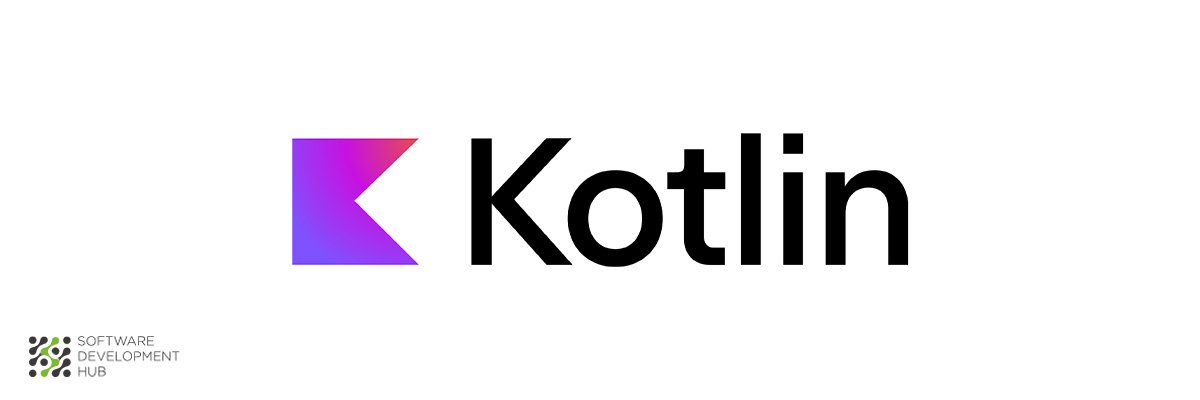Mobile App Development Languages: Which One Should You Choose in 2026
Mobile app development languages determine the foundation of every application, and with the global mobile app market projected to reach over $756 billion by 2027, the choice carries significant business implications.
The landscape of mobile development has shifted considerably. What once centered on syntax preferences now represents a strategic decision that affects performance, scalability, and competitive positioning. Teams that maintain outdated technology stacks risk falling behind competitors who adapt to current development paradigms.
Current data reveals the direction of mobile development: over 60% of new mobile apps will be built using low-code tools, 40% of enterprise mobile apps will integrate AI capabilities, and 79% of executives consider AI-driven personalization a competitive differentiator. These patterns are redefining the criteria for selecting programming languages for mobile app development.
This analysis examines five programming languages that will shape mobile development in 2026. We will evaluate their technical capabilities, development ecosystems, and practical applications to help you make an informed decision based on project requirements rather than popular trends.
Swift
 Swift represents Apple's strategic response to the limitations of Objective-C in modern mobile development. Introduced in 2014 as a replacement for Objective-C, Swift has evolved into the primary language for Apple's ecosystem development. The language combines performance optimization with developer productivity, addressing critical needs in enterprise-grade iOS applications.
Swift represents Apple's strategic response to the limitations of Objective-C in modern mobile development. Introduced in 2014 as a replacement for Objective-C, Swift has evolved into the primary language for Apple's ecosystem development. The language combines performance optimization with developer productivity, addressing critical needs in enterprise-grade iOS applications.
Swift key features
Performance stands as Swift's most significant advantage. Apple's benchmarks demonstrate that Swift executes 2.6 times faster than Objective-C and 8.4 times faster than Python. This performance improvement directly affects user experience through faster app launches and more responsive interfaces.
Swift's syntax prioritizes readability without sacrificing functionality. The language eliminates many of Objective-C's verbose requirements—semicolons are optional, and type inference reduces the need for explicit type declarations. Lyft's migration to Swift demonstrates this efficiency: their team reduced the codebase from 75,000 lines to fewer than 25,000 lines while maintaining identical functionality.
Safety features distinguish Swift from many other programming languages. The language incorporates several protective mechanisms:
- Automatic Reference Counting (ARC) manages memory allocation and deallocation
- Mandatory variable initialization prevents undefined behavior
- Array bounds checking eliminates buffer overflow vulnerabilities
- Optional types eliminate null pointer exceptions
Swift 6, released in 2025, introduced compile-time macros for reducing boilerplate code, improved compiler performance, and enhanced error diagnostics. The language maintains full interoperability with Objective-C, allowing teams to migrate existing projects incrementally rather than requiring complete rewrites.
Swift pros and cons
Pros:
- Performance optimization: Swift's LLVM compiler generates highly optimized machine code, reducing execution time and improving responsiveness
- Error reduction: The type system and compile-time checks prevent common programming errors before deployment
- Development efficiency: Concise syntax reduces the time required for coding and maintenance tasks
- Automatic memory management: ARC handles memory allocation without developer intervention
- Active development: Regular language updates and community contributions maintain modern capabilities
- Prototyping capabilities: Swift Playgrounds enable rapid testing of code concepts
Cons:
- Developer availability: Only 8.1% of developers surveyed on StackOverflow reported using Swift, indicating a limited talent pool
- Platform constraints: Swift requires iOS 7 or later, excluding older device support
- Version stability: Different Swift versions may produce compatibility issues despite ongoing improvements
- Ecosystem maturity: The library ecosystem remains smaller compared to established languages like Java or JavaScript
Swift pricing and ecosystem
Swift itself is free as an open-source language, though project costs depend on complexity and timeline. Basic MVP applications typically require $10,000-$30,000 and 2-4 months development time, while enterprise applications with AI integration or AR capabilities can exceed $100,000 with 6+ months development cycles.
The Swift development ecosystem includes:
- Swift Package Manager for dependency management
- Xcode as the primary integrated development environment
- SwiftUI for declarative user interface construction
- Swift Core Libraries providing cross-platform APIs
Swift supports development across Apple's platform ecosystem: iOS, macOS, watchOS, tvOS, and Vision Pro. Since becoming open source in 2020, Swift also runs on Linux and Windows, though these implementations are less mature.
Swift proves most effective for:
- Applications requiring real-time processing with minimal latency
- Projects handling sensitive user data with strict security requirements
- Applications needing seamless integration with iOS system features
- Complex applications that require long-term maintenance and scaling
For projects prioritizing Apple platform optimization and long-term maintainability, Swift offers compelling advantages among mobile development languages.
Kotlin
 Kotlin has established itself as a cornerstone technology for Android development since Google's official endorsement in 2019. JetBrains developed this statically typed language in 2011, and its adoption has accelerated significantly—over 60% of professional Android developers now rely on Kotlin for their projects.
Kotlin has established itself as a cornerstone technology for Android development since Google's official endorsement in 2019. JetBrains developed this statically typed language in 2011, and its adoption has accelerated significantly—over 60% of professional Android developers now rely on Kotlin for their projects.
Kotlin key features
The language prioritizes developer productivity through concise syntax and reduced boilerplate code. Kotlin achieves the same functionality as Java with significantly fewer lines of code, allowing developers to express complex logic more efficiently. This conciseness doesn't compromise readability—the syntax maintains clarity that supports long-term code maintenance.
Kotlin's null safety system addresses one of Java's most persistent problems. The language incorporates nullability directly into its type system, making all types non-nullable by default. Developers must explicitly mark variables that can accept null values using the ? operator. This approach eliminates entire categories of runtime crashes and improves application reliability.
The language includes several productivity-focused features:
- Coroutines: Lightweight threading mechanism that enables asynchronous programming without blocking the main thread
- Extension functions: Allow adding new functionality to existing classes without inheritance
- Data classes: Automatically generate essential methods like toString, equals, and copy for data storage classes
- Smart casting: Eliminates explicit casting after type checks
These features combine to create a development environment that reduces common programming errors while improving code maintainability.
Kotlin pros and cons
Advantages:
- Code efficiency: Kotlin reduces code by up to 40% compared to Java, accelerating development cycles
- Java compatibility: Seamless integration with existing Java codebases enables gradual migration strategies
- Null safety: Compile-time null checking prevents NullPointerException errors
- Cross-platform capabilities: Kotlin Multiplatform enables sharing up to 100% of business logic across platforms
- Asynchronous programming: Coroutines simplify concurrent operations and background task management
- IDE integration: Excellent support across IntelliJ IDEA, Android Studio, and Eclipse
Limitations:
- Build performance: Clean builds execute slower than Java equivalents, though incremental builds remain fast
- Transition complexity: Java developers require time to adapt to new concepts and syntax patterns
- Resource availability: Fewer comprehensive learning materials compared to established languages
- Developer pool: Smaller community of experienced Kotlin developers relative to Java
Kotlin pricing and ecosystem
Kotlin operates under the Apache 2.0 license, making it freely available for commercial and open-source projects. JetBrains maintains the primary development with contributions from Google and the broader developer community through GitHub. This collaborative approach has created a robust ecosystem of tools and resources.
The Kotlin development ecosystem includes several key frameworks:
- Kotlin Multiplatform (KMP): Enables business logic sharing across platforms while maintaining native UI capabilities
- Compose Multiplatform: Declarative framework for building user interfaces across multiple platforms
- Ktor: Framework for asynchronous server and client application development
- Kotlin/JS: Compilation target for JavaScript frontend development
- Koog: JetBrains' framework for AI agent development within the JVM ecosystem
Google has integrated Kotlin support throughout the Android development toolchain. Many Jetpack libraries now include Kotlin Multiplatform compatibility, including lifecycle, paging, room, and datastore components. This official support demonstrates Google's commitment to Kotlin as the preferred Android development language.
Kotlin excels in specific application categories:
- Enterprise applications requiring reliability and maintainability standards
- Cross-platform projects maximizing code reuse while preserving native functionality
- Applications processing sensitive data that benefit from null safety protections
- AI-powered mobile applications utilizing frameworks like Koog
Industry-specific implementations demonstrate Kotlin's adaptability. Financial technology companies use it to maintain consistent business logic across platforms, reducing platform-specific inconsistencies. Educational and gaming applications benefit from its performance characteristics and reduced code complexity.
The language's position in mobile development continues strengthening as cross-platform approaches gain acceptance. Its combination of modern language features, multiplatform capabilities, and industry backing makes Kotlin a practical choice for projects requiring both immediate functionality and future scalability.
JavaScript/TypeScript
 JavaScript and TypeScript represent a strategic pairing for cross-platform mobile development. This combination allows developers to maintain a single codebase while deploying applications across iOS, Android, and web platforms. The integration of JavaScript's established ecosystem with TypeScript's type safety has positioned this duo as a practical solution for teams prioritizing development efficiency.
JavaScript and TypeScript represent a strategic pairing for cross-platform mobile development. This combination allows developers to maintain a single codebase while deploying applications across iOS, Android, and web platforms. The integration of JavaScript's established ecosystem with TypeScript's type safety has positioned this duo as a practical solution for teams prioritizing development efficiency.
JavaScript/TypeScript key features
TypeScript functions as a superset of JavaScript, adding static type checking while preserving full compatibility with existing JavaScript code. All valid JavaScript code runs as TypeScript without modification. The core value lies in TypeScript's optional type system, which enables developers to define object and function structures directly in code, facilitating both documentation and error detection within development environments.
The TypeScript compiler converts TypeScript source code into standard JavaScript, ensuring compatibility across browsers, Node.js, Deno, and Bun environments. This compilation step identifies potential errors before runtime execution, significantly reducing production bugs.
Developer productivity increases through TypeScript's intelligent tooling features:
- Automatic type inference for variables
- Interface definitions for structured data
- Enhanced code navigation and autocompletion
- Real-time error detection during development
Industry adoption reflects these benefits. 78% of developers surveyed in 2020 reported using TypeScript, with 93% indicating they would continue using it. The language earned recognition as "Most Adopted Technology" based on year-over-year growth metrics.
JavaScript/TypeScript pros and cons
Pros:
- Early error detection: TypeScript catches type-related issues during development rather than runtime
- Enhanced code organization: Type definitions function as inline documentation, clarifying code intent
- Improved refactoring: Developers can safely rename properties across entire codebases
- Better team collaboration: Type definitions establish clear contracts between code components
- Strong tooling support: IDEs provide intelligent suggestions and comprehensive documentation
- Cross-platform compatibility: Single codebase deployment across iOS, Android, and web platforms
Cons:
- Learning curve: Developers need time to master TypeScript's type system and tooling
- Compilation requirement: TypeScript adds a build step that plain JavaScript doesn't require
- Project configuration: Initial setup can overwhelm developers new to TypeScript
- Runtime limitations: Type checking occurs only at compile time, not during execution
- Library compatibility: Not all JavaScript libraries include TypeScript type definitions
JavaScript/TypeScript pricing and ecosystem
TypeScript operates under an open-source license, eliminating direct language costs. The mobile application market, valued at approximately USD 475.90 billion, projects growth to USD 756.00 billion by 2027, creating substantial opportunities for TypeScript-skilled developers.
Several frameworks enable JavaScript/TypeScript mobile development:
- React Native: Meta's 2015 framework renders components to native UI elements, achieving native-like performance. Market share grew from 4.73% in 2022 to 6.75% in 2024.
- NativeScript: This 2014 framework provides direct access to native Android and iOS APIs through JavaScript or TypeScript, eliminating WebView dependencies.
- Ionic: An open-source framework optimized for hybrid mobile applications, reducing development time and costs.
- PhoneGap (Apache Cordova): Offers extensive library access and backend capabilities to accelerate development cycles.
Community satisfaction remains high, with 93% of developers expressing positive experiences with TypeScript. This engagement drives continuous language improvements and resource development.
TypeScript particularly benefits:
- Enterprise applications: Static typing ensures code reliability and maintainability at scale
- Cross-platform projects: Single codebase deployment across Android, iOS, and web environments
- Team-based development: Clear type annotations improve developer communication and code understanding
- Frequently updated applications: Type safety reduces risks during code refactoring and feature additions
Major companies have implemented TypeScript successfully in mobile applications, including Slack, Medium, DoorDash, and Typeform. React Native with TypeScript ranks first among non-native frameworks on the Apple App Store and second on Google Play.
The incremental adoption path suits teams modernizing existing JavaScript projects. Developers can introduce TypeScript gradually, with each addition improving editor support and codebase quality. This approach enables teams to adopt modern development practices without disrupting current workflows.
Python
 Python's role in mobile development might surprise you. Ranked as the most popular programming language according to the TIOBE index in 2024, this veteran language has expanded beyond its traditional data analysis and backend domains into mobile app development, with 51% of developers worldwide using it.
Python's role in mobile development might surprise you. Ranked as the most popular programming language according to the TIOBE index in 2024, this veteran language has expanded beyond its traditional data analysis and backend domains into mobile app development, with 51% of developers worldwide using it.
Python key features
What makes Python attractive for mobile development? The answer lies in its fundamental design philosophy: simplicity without sacrificing capability. The language's line-by-line execution structure makes it accessible for developers who need to build mobile applications quickly, allowing teams to focus on functionality rather than wrestling with complex syntax.
Python brings several advantages to mobile development:
- Cross-platform compatibility: Write once, deploy on both Android and iOS, eliminating the need for separate codebases and reducing development costs
- Rich libraries and frameworks: Kivy and BeeWare provide robust foundations for cross-platform GUI development
- Integration capabilities: Seamless connectivity with Machine Learning, Data Science, and AI technologies
The language supports diverse mobile application types including audio-video apps, gaming applications, blockchain solutions, and machine learning implementations. Frameworks like Kivy and BeeWare act as bridges between Python's general-purpose capabilities and mobile-specific requirements.
Python pros and cons
Pros:
- Development efficiency: Python's readable syntax reduces code volume while maintaining functionality
- Community strength: Over 10 million developers worldwide provide extensive support and resources
- Cost effectiveness: Single codebase deployment across multiple platforms minimizes development expenses
- Versatility: Effective across web development, mobile apps, machine learning, AI programs, and game development
- Accessibility: Open-source GNU license makes it available to developers and businesses of all sizes
Cons:
- Performance constraints: As an interpreted language, Python generally runs slower than compiled alternatives like C++ and Java
- Mobile adaptation challenges: Requires additional frameworks and effort since Python isn't native to mobile environments
- Global Interpreter Lock limitations: Prevents true multithreading, potentially impacting CPU-bound program performance
- Memory consumption: Substantial memory usage makes it less suitable for memory-intensive applications
- Development cycle considerations: Mobile development compilation processes can be longer than native tools
Python pricing and ecosystem
Python itself costs nothing to use as an open-source language. However, development costs vary significantly based on project scope and complexity. Simple mobile applications using frameworks like Kivy or BeeWare typically range from $5,000 to $20,000. More sophisticated cross-platform applications with advanced features can cost $20,000 to $100,000.
The Python mobile ecosystem centers on two primary frameworks:
Kivy functions as an open-source library for cross-platform GUI applications. It employs a custom UI toolkit that operates across platforms without depending on native features. Kivy particularly excels in GPU-accelerated performance, making it ideal for applications requiring advanced animations or game-like interfaces.
BeeWare enables developers to create native-looking applications with a single codebase. Unlike Kivy's custom approach, BeeWare utilizes each platform's native UI toolkit, producing applications that appear and function as genuine native apps.
For teams where development speed outweighs raw performance requirements, or where Python expertise already exists, the language offers a practical approach to multi-platform mobile development. We should note, however, that careful evaluation of Python's limitations against specific project requirements remains essential before selecting it as a primary mobile development language.
C++
 Over 36 years of history have established C++ as a performance-oriented solution for mobile app development, particularly where computational efficiency determines application success. This established language maintains its relevance for developers building resource-intensive mobile applications across multiple platforms.
Over 36 years of history have established C++ as a performance-oriented solution for mobile app development, particularly where computational efficiency determines application success. This established language maintains its relevance for developers building resource-intensive mobile applications across multiple platforms.
C++ key features
Performance defines C++'s primary value proposition. The language provides direct hardware access and manual memory control that compiled languages require for optimal execution speed. According to benchmarks, C++ delivers superior speed compared to interpreted alternatives, making it suitable for applications where milliseconds matter.
The language offers extensive library support through containers, hash tables, and mapping structures that streamline development workflows. C++ supports cross-platform deployment across iOS, Android, and Windows environments without compromising security or performance characteristics. Its object-oriented design incorporates data abstraction and encapsulation principles, while pointer support enables precise memory utilization. Applications built with C++ operate without garbage collection overhead, eliminating the performance penalties associated with automatic memory management.
C++ pros and cons
Pros:
- Exceptional execution speed, often considered the fastest object-oriented language available
- Direct control over memory management and system resources
- Cross-platform compatibility requiring minimal code modifications
- Extensive library ecosystem with thousands of available resources
- Strong security features that resist reverse engineering attempts
Cons:
- Steep learning curve with multiple language dialects to master
- Time-intensive development process requiring manual memory management
- Notoriously difficult implementation even for experienced developers
- Higher susceptibility to memory leaks without proper management practices
- Complex debugging processes
C++ pricing and ecosystem
C++ operates as a free, open-source language with robust development tool support. Visual Studio provides a dedicated "Mobile development with C++" workload that installs necessary SDKs for cross-platform projects. The ecosystem includes cross-platform templates designed to accelerate project initialization. Several frameworks support C++ mobile development, including native Android development through the Play Games Services v2 Native SDK. For game development specifically, frameworks like SDL2 enable cross-platform functionality with straightforward integration processes. Multiple IDEs accommodate C++ mobile development, including Visual Studio, Eclipse, and Qt Creator.
Comparison Table
The five programming languages examined offer distinct advantages and limitations for mobile development projects. This comparison provides a structured analysis of their core characteristics to support informed decision-making based on specific project requirements.
|
Language |
Key Features |
Main Pros |
Main Cons |
Best Use Cases |
Ecosystem/Framework Support |
|
Swift |
- 2.6x faster than Objective-C |
- Enhanced performance |
- Limited talent pool (8.1% developers) |
- Real-time apps |
- Swift Package Manager |
|
Kotlin |
- Concise syntax |
- 40% less code than Java |
- Slower compilation speed |
- Enterprise applications |
- Kotlin Multiplatform |
|
JavaScript/TypeScript |
- Static typing system |
- Early error detection |
- Learning curve |
- Enterprise applications |
- React Native |
|
Python |
- Simple, readable syntax |
- Easy development |
- Performance limitations |
- Rapid prototyping/MVPs |
- Kivy |
|
C++ |
- Direct hardware access |
- Exceptional performance |
- Steep learning curve |
- Performance-critical apps |
- Visual Studio Mobile Dev |
Each language addresses different development priorities. Swift and Kotlin provide platform-optimized solutions for iOS and Android respectively, while JavaScript/TypeScript and Python offer cross-platform capabilities with varying performance trade-offs. C++ serves specialized applications where performance requirements outweigh development complexity considerations.
Conclusion
Selecting the appropriate programming language for mobile app development represents a strategic decision that extends beyond technical preferences. This analysis has examined five languages that will define mobile development practices through 2026, each offering distinct advantages for specific project requirements.
Swift continues to dominate Apple's ecosystem through its performance optimization and integrated safety features, making it particularly suitable for applications requiring stringent security standards and real-time processing capabilities. Kotlin has established itself as the preferred choice for Android development, with its null safety system and cross-platform potential addressing both current needs and future scalability requirements.
JavaScript/TypeScript maintains its position as the primary solution for teams pursuing cross-platform development strategies, while Python offers practical benefits for rapid prototyping scenarios and projects incorporating machine learning capabilities. C++ remains the definitive choice for performance-critical applications where computational efficiency determines user experience quality.
The decision process should address several fundamental questions: What platforms require support for your target audience? Which performance benchmarks must your application meet? Does your development team possess existing expertise in particular languages? How do timeline constraints and budget allocations affect language selection?
Current industry patterns indicate continued growth in AI integration, cross-platform solutions, and low-code development approaches. Languages that support these capabilities while maintaining performance standards will likely expand their market presence in the coming years.
We recommend evaluating immediate project requirements alongside long-term scalability objectives when making language selections. Successful development teams often maintain competency across multiple languages, enabling them to choose the most appropriate tool for each specific challenge rather than applying uniform solutions to diverse problems.
The optimal programming language ultimately serves your specific project goals while supporting efficient development processes and sustainable maintenance practices. Consider these factors carefully, as the choice will influence not only development efficiency but also long-term product success and team productivity.
Categories
About the author
Share
Need a project estimate?
Drop us a line, and we provide you with a qualified consultation.








